The north side of the 200 block of East Chapel Hill St. - between Roney (which ran in front of the Carolina Theater) and Foster - resembled many of the other blocks downtown, with a row of two story, varied facades.
Below, a partial view of the block - on the left - from the early 1920s.
(Courtesy Durham County Library)
201-207 East Chapel Hill, the Warren-Strudwick building. Interestingly, this building is featured in the 1922 "Milestones Along the Color Line" as William C. Strudwick, an African-American physician, had his office in this building (at 203 1/2 East Chapel Hill St.)
(Courtesy Duke University Archives / Digital Durham)
A much clearer shot of the block is below. The shot is taken from the corner of Corcoran and East Chapel Hill, looking northwest. The Union Bus Terminal was originally in the 300 block of East Chapel Hill, and patrons are boarding the bus in front of the Washington Duke Hotel. The four facades of the 200 block are visible in the background.
(Courtesy Duke Archives)
Below, a good shot of the street in the late 1950s or early 1960s.
Looking northeast from East Chapel Hill and Roney St.
(Courtesy Herald Sun)
Along with King's, one of the go-to destinations for hot dogs in Durham was Amos n' Andy's, located on the ground floor of the Strudwick building by the 1950s.
Deluxe Barber Shop and Amos n' Andy's, 01.29.57
(Courtesy Herald Sun)
Although the eponymous, and once enormously popular radio show is cringe-worthy today (and I find it particularly galling to realize that it was located in the Strudwick building) a generation of children / Duke students loved these hot dogs.
It's as good a place as any to point out that the creators of the Amos n' Andy show, Freeman Gosden and Charles Correll, met in Durham in 1919 while in the employ of the Joe Bren Producing Company. Correll was staging a theater production at "the local Elk's chapter" (I guess that this was likely a block away at the Temple Building and his superiors told him to seek out Gosden for advice. They would work together for 50 years. I don't know if this restaurant was named only for the show, or with some knowledge of the Durham connection.
These buildings survived urban renewal, and even survived an amusingly familiar scene. I assure you, despite the resemblance, the shot below does not depict our current streetscape.
(Courtesy Durham County Library)
It was taken in 1975, when we created the streets that we are now correcting. The 200 block is visible on the right, and the Herald-Sun buildings on the left.
These buildings persisted well into the 1980s. The shot below was taken in 1984 from a very similar vantage point to the 1920s 'bus' shot, looking northwest. The store on the corner is noted to be 'The Typewriter Store.'
And a view of the other end of the block, looking northeast, shows 201-207 East Chapel Hill, then Durham Sporting Goods, given a modernist makeover.
And a shot, below, taken by Ralph Rogers from the CCB building in 1986 gives a great view looking north down Foster. Most of what is on the right of Foster is pretty similar, but not the left side. The large tobacco warehouses that took up space that is now parking and Durham Central Park are visible in the distance.
(Courtesy Durham County Library)
I find the history of Durham in the 1970s and 1980s some of the hardest stuff to easily track down, surprisingly. If I had the time to pore over the microfilm of the Herald, perhaps I could get a better handle on it. That serves as my caveat to say that I know little of the events that led to the demolition of this block and the construction of the convention center and the Omni Hotel in 1988. Ralph Rogers documented the changes to this block very well, and his sequence of shots is below.
Looking northwest from East Chapel Hill.
(Courtesy Durham County Library)
Looking northwest from East Chapel Hill.
(Courtesy Durham County Library)
Looking northwest from East Chapel Hill and Corcoran.
(Courtesy Durham County Library)
The completed project.
(Courtesy Durham County Library)
I don't particularly have a problem with the hotel, which is just another bland 1980s multistory hotel. It isn't really offensive, nor is it the least bit inspiring.
The streetscape is terrible, though, with one tiny entrance on East Chapel Hill and a lot of blank wall. The difference between the street level of the Washington Duke, above, and the street level of the Marriott below is striking. I do have a more significant problem, as I've alluded to previously, with the convention center space that closed off Roney St. and created a long service entrance out of most of the 100-200 blocks of East Chapel Hill. Really, really dumb urban design. It's hard not to be struck by the demolition of the Washington Duke Hotel so that this could be built a mere 13 years later. I hope at some point the 'Roney Wall' will be breached, and we will once again be able to see and walk to the Carolina Theater from East Chapel Hill St.
The Marriott, 2007.
(This shot is a bit wonky, I know - I was trying to get the whole hotel from the Corcoran/East Chapel Hill vantage point.)
(Courtesy Durham County Library)

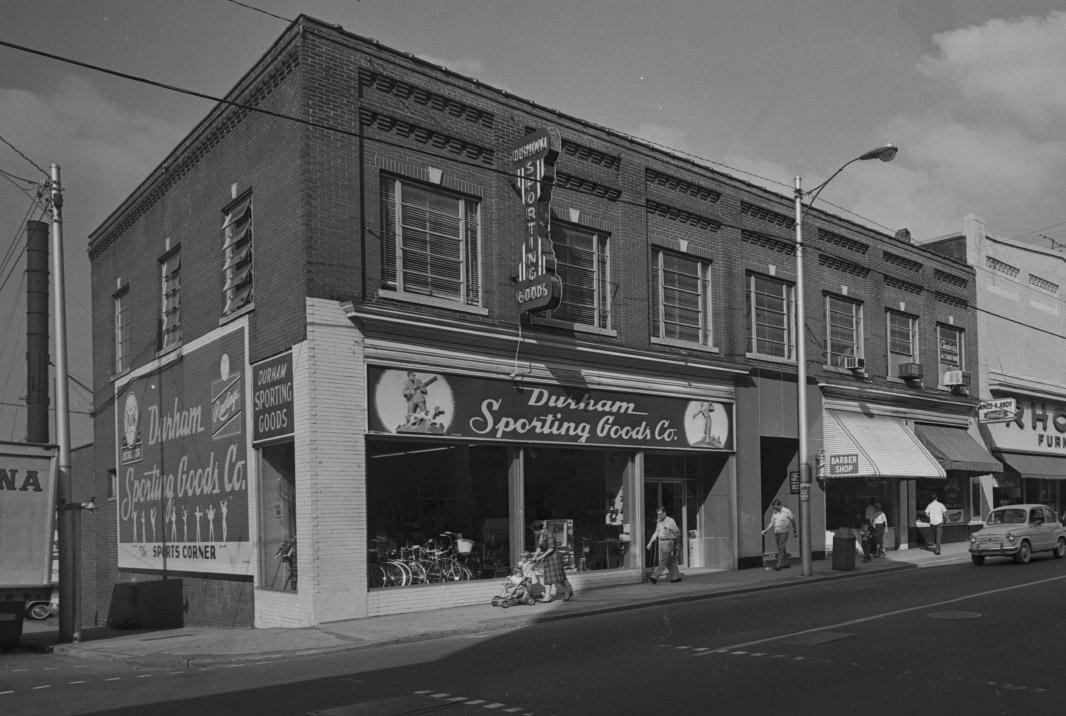
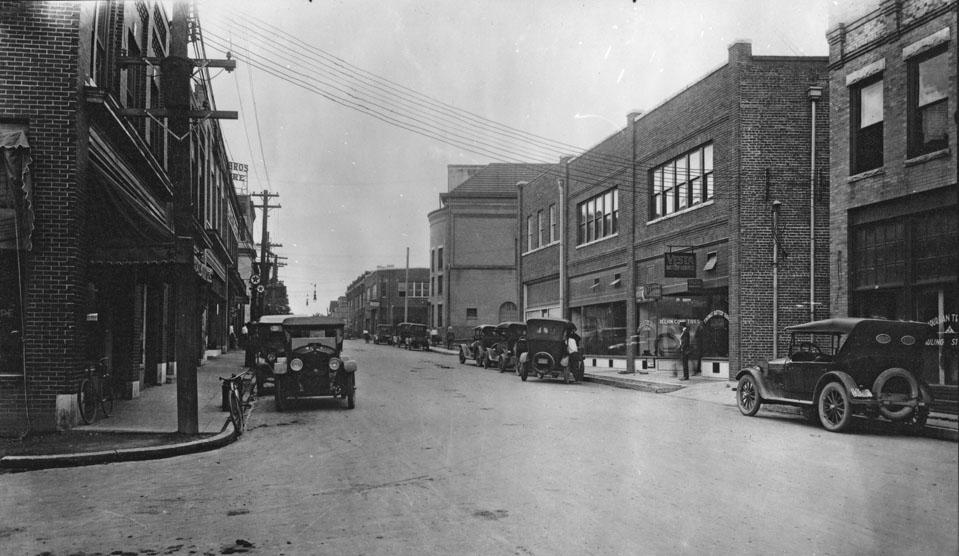
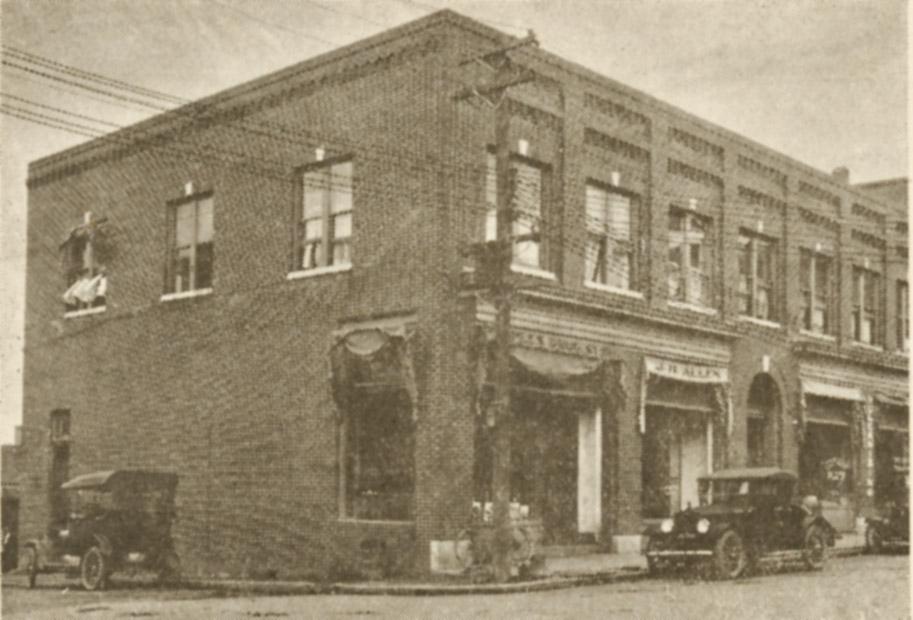
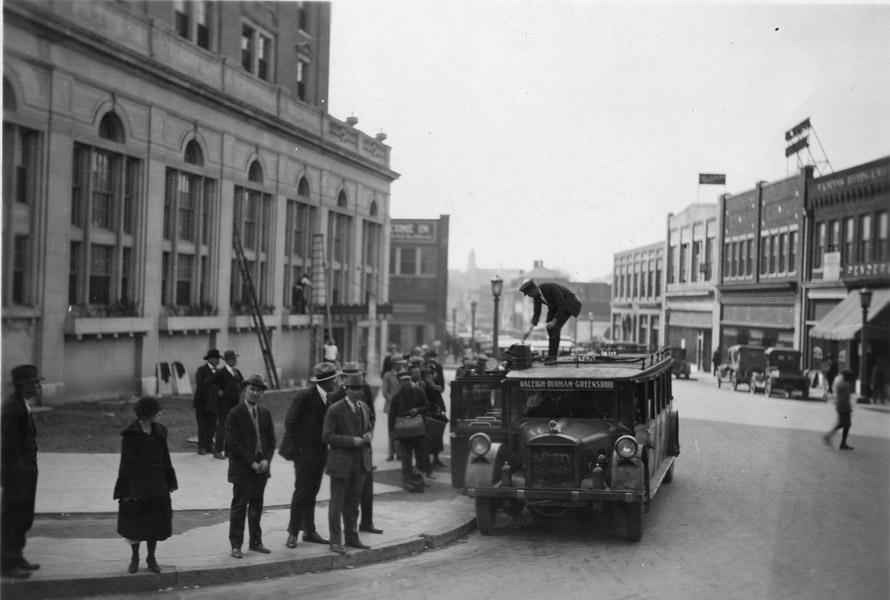

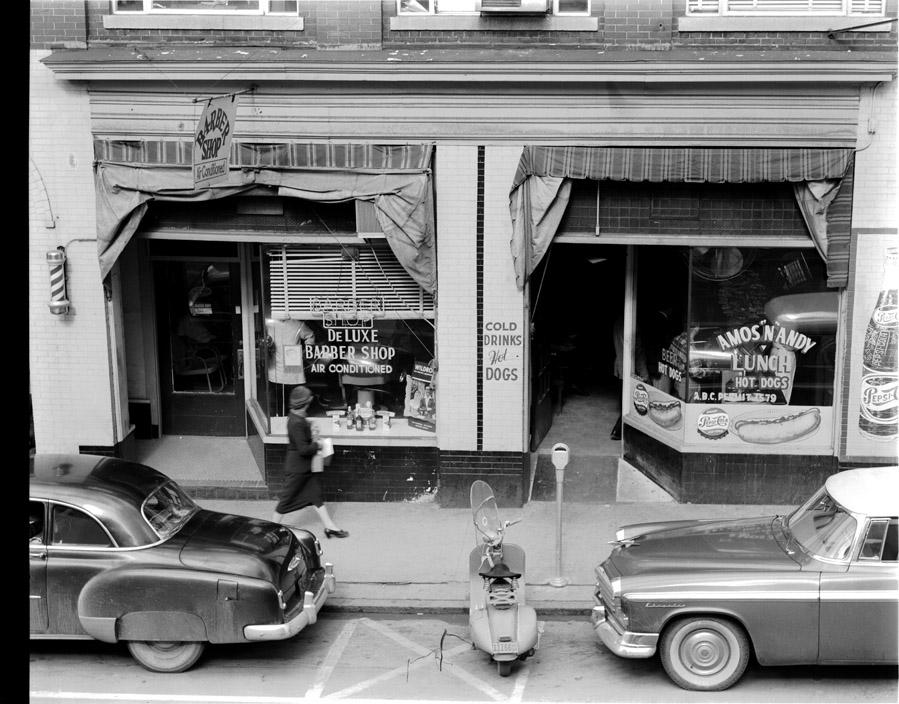
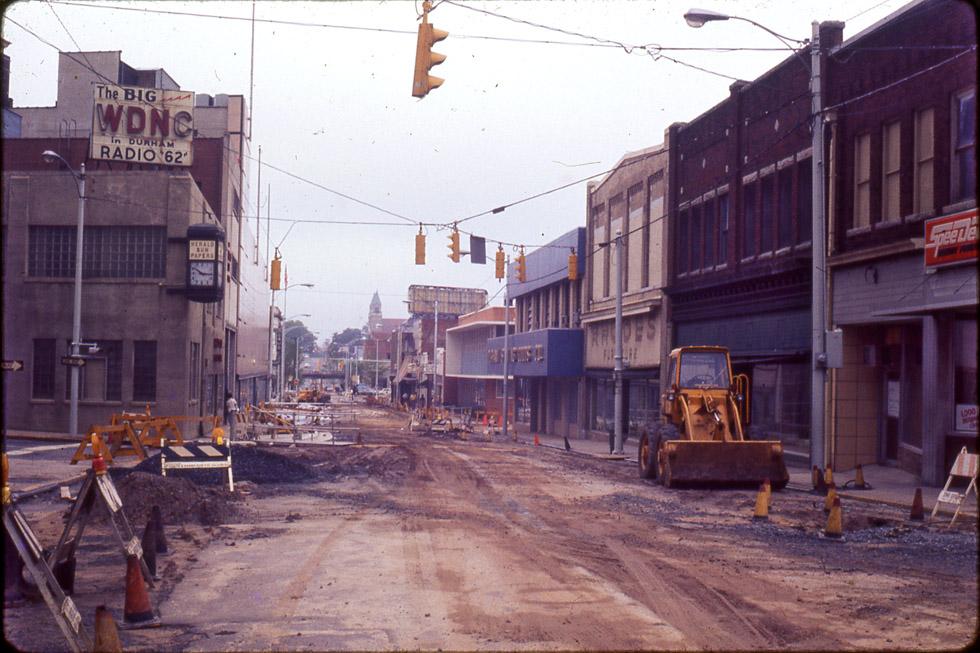
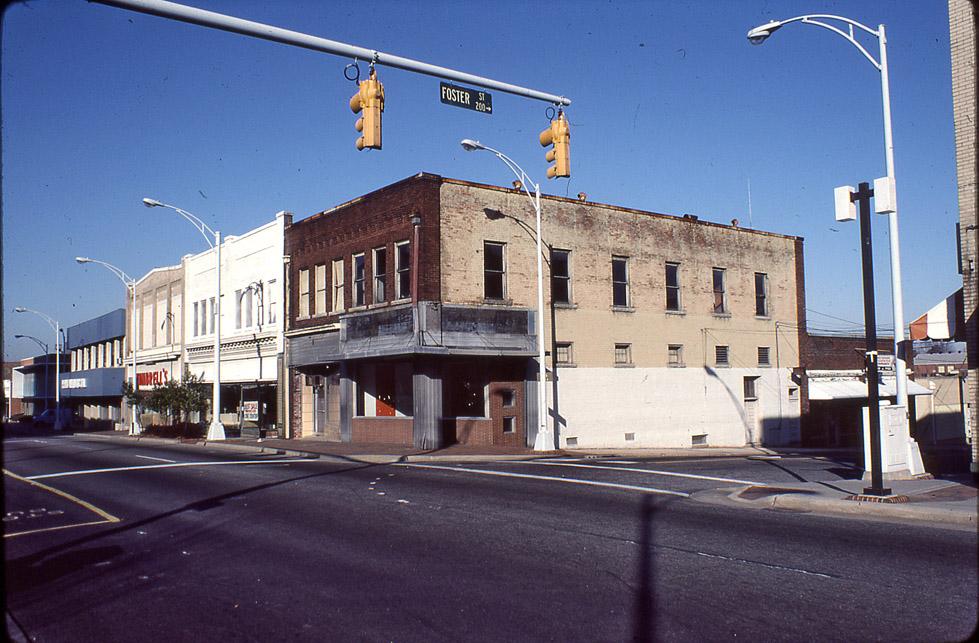
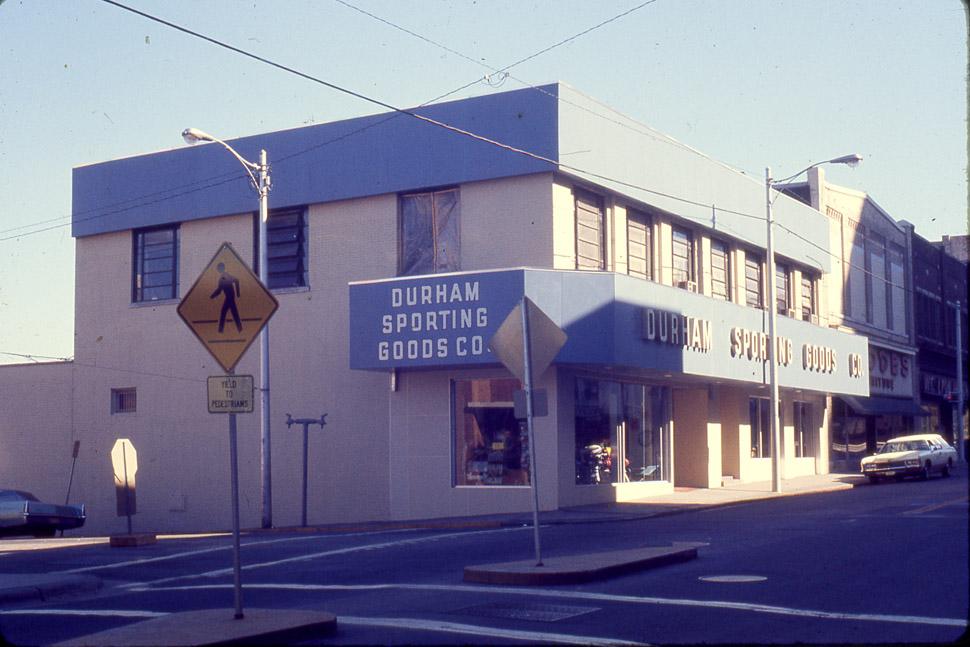
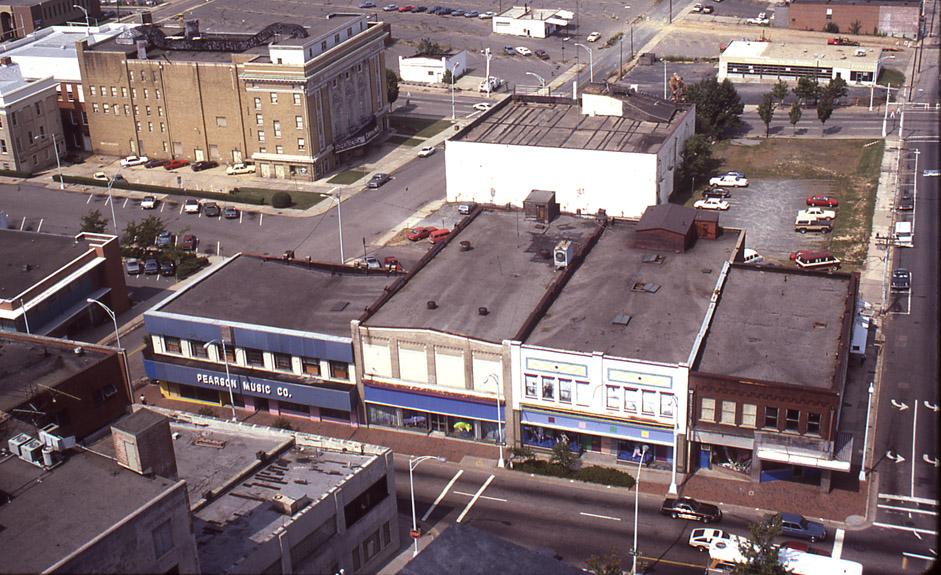
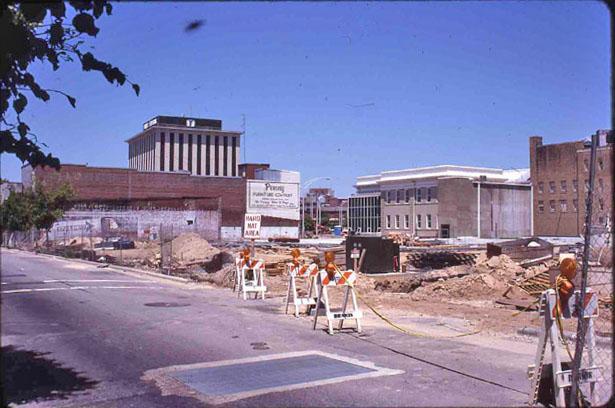
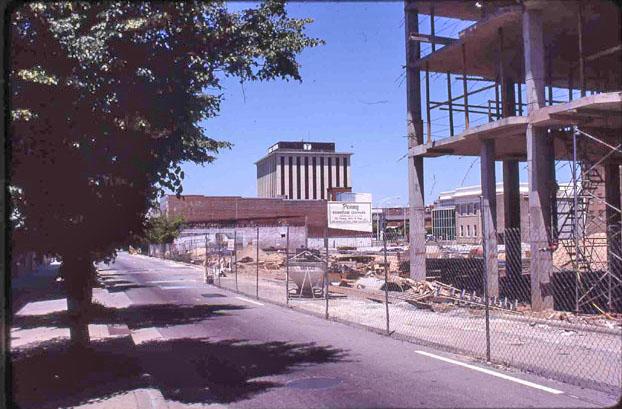

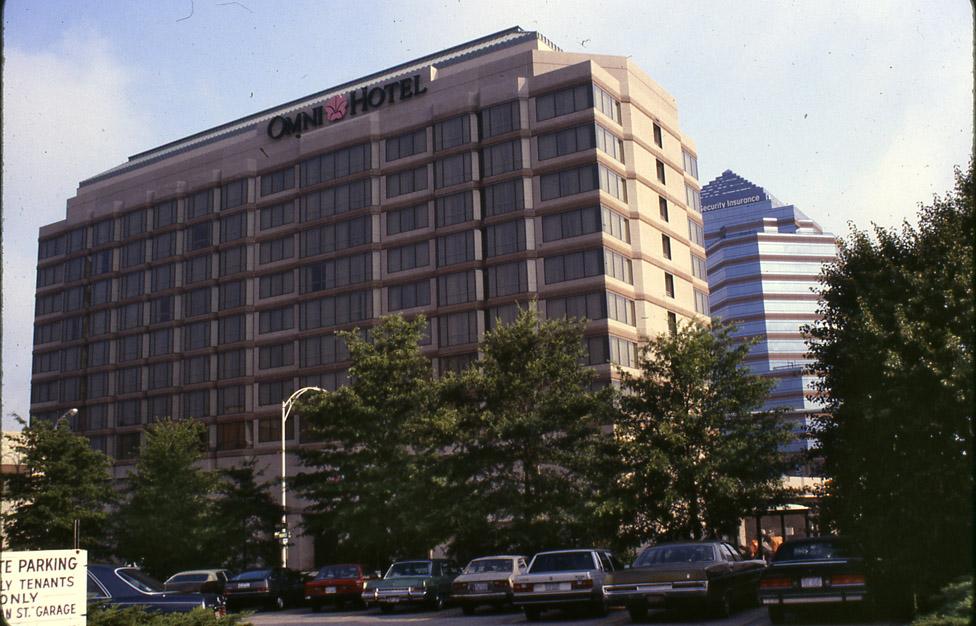
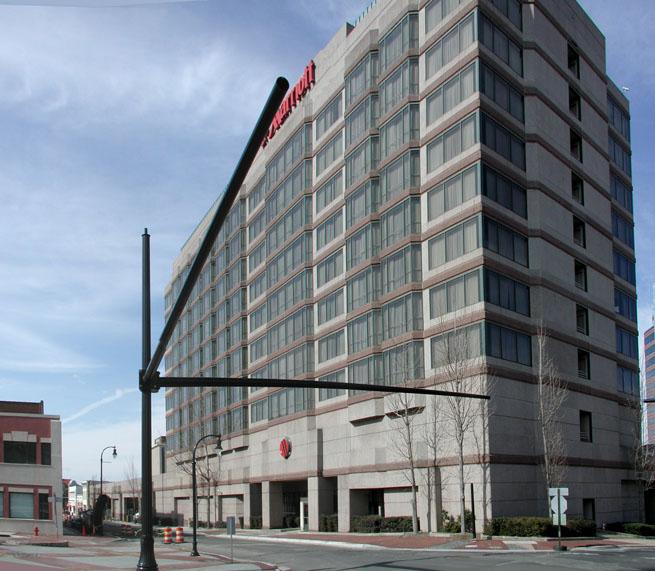
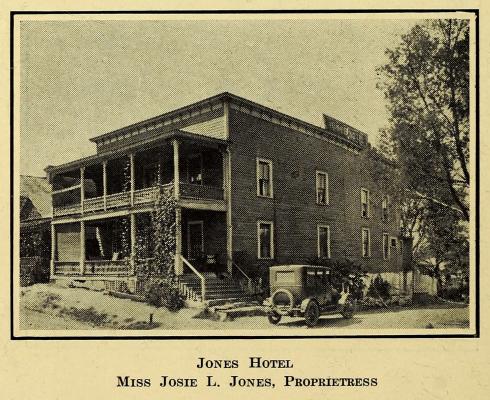
Add new comment
Log in or register to post comments.